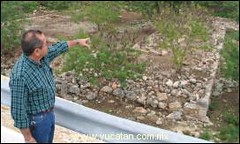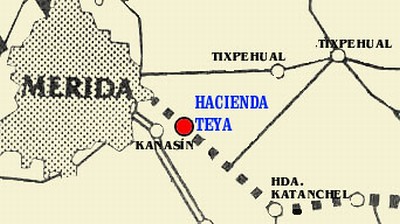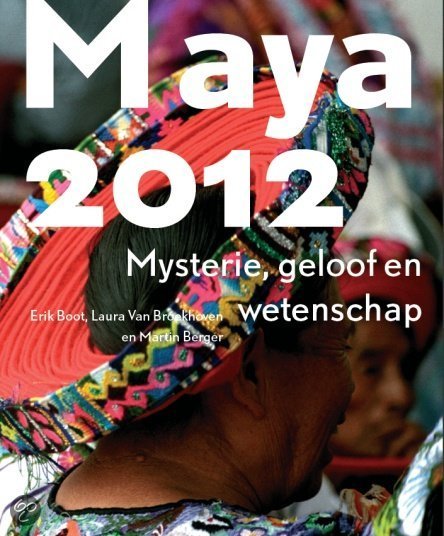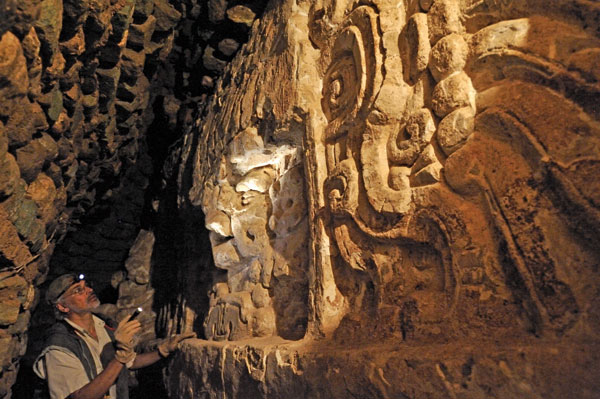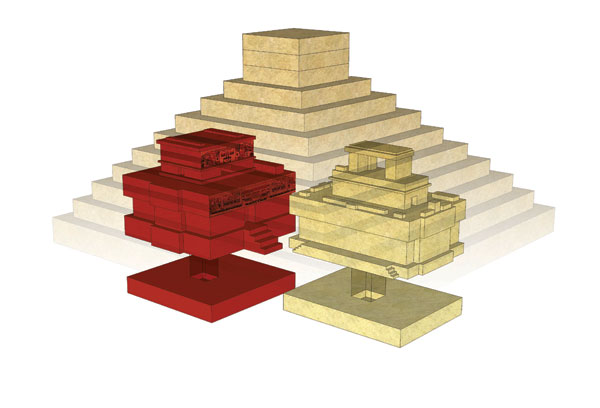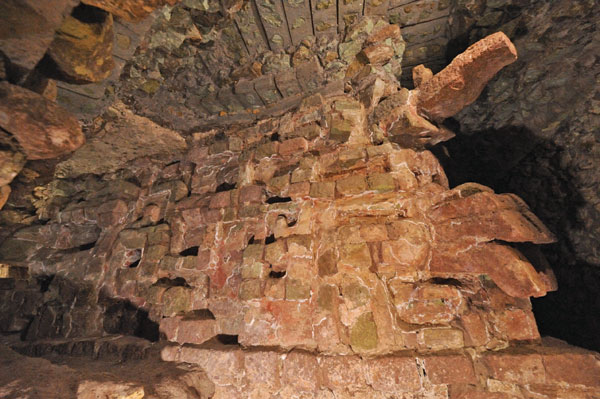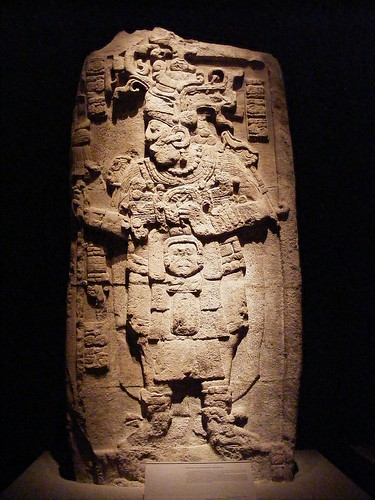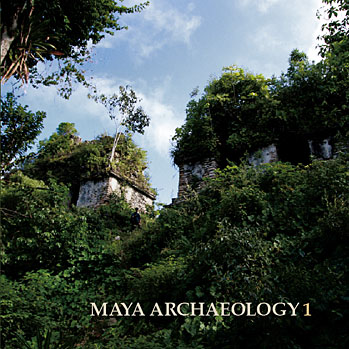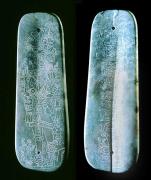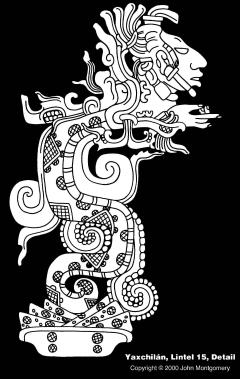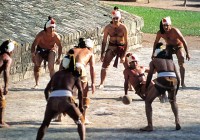
Maya News Updates 2007, No. 2: Maya Collapse - Linked to Monsoon Changes
On January 3, 2007, the scholarly magazine Nature (Vol. 445: 74-77) published an article, written by Yancheva G. et al., in which the collapse of the Tang dynasty in China as well as the collapse of the Maya is linked to monsoon changes. This article is summarized online as follows:
"The Asian–Australian monsoon is an important component of the Earth's climate system that influences the societal and economic activity of roughly half the world's population. The past strength of the rain-bearing East Asian summer monsoon can be reconstructed with archives such as cave deposits, but the winter monsoon has no such signature in the hydrological cycle and has thus proved difficult to reconstruct. Here we present high-resolution records of the magnetic properties and the titanium content of the sediments of Lake Huguang Maar in coastal southeast China over the past 16,000 years, which we use as proxies for the strength of the winter monsoon winds. We find evidence for stronger winter monsoon winds before the Bølling–Allerød warming, during the Younger Dryas episode and during the middle and late Holocene, when cave stalagmites suggest weaker summer monsoons. We conclude that this anticorrelation is best explained by migrations in the intertropical convergence zone. Similar migrations of the intertropical convergence zone have been observed in Central America for the period ad 700 to 900, suggesting global climatic changes at that time. From the coincidence in timing, we suggest that these migrations in the tropical rain belt could have contributed to the declines of both the Tang dynasty in China and the Classic Maya in Central America."
Here follows the online Nature report on this particular article (edited by MNU):
Did worldwide drought wipe out ancient cultures? Monsoon records link demise of the Tang in China and Maya in Mexico. They lived in resplendence, half a world apart, before meeting their respective downfalls within decades of one another. Now a new theory suggests that the decline of the Tang Dynasty in China and that of the Mayan civilization in Mexico may both have been due to the same worldwide drought.
Lake Huguang Maar. Sediments collected from Lake Huguang Maar in southeastern China suggest that Asian summer monsoon rains were weaker during the eighth and ninth centuries AD, the time during which the Tang Dynasty faded from glory. And intriguingly, the same pattern is seen in sediments from Cariaco basin off the Venezuelan coast, suggesting that a similar drought might have been occurring in nearby Mexico. The events may both be the result of a southward shift in rain patterns that deprived the entire northern tropics of summer rains, suggest researchers led by Gerald Haug of Germany's National Research Centre for Geosciences in Potsdam. The hardship caused by this drought could have been a key factor in the declines of the two cultures, they suggest. At the moment, it is little more than a theory, admits Haug's colleague Larry Peterson, of the University of Miami, Florida. "The records are pretty intriguing," he says. "But it's really just a correlation in time."
Rain, rain, gone away. The parallels are nevertheless notable. The Tang Dynasty, regarded as a high point in Chinese civilization, began to wane in the mid-700s and ultimately fell in AD 907 after a string of rebellions. Similarly, the Maya, who produced the earliest known written records in the Americas, numbered some 15 million in the middle of the eighth century, but had declined by three-quarters by AD 830, and left the last of their calendrical carvings in AD 909. Failing summer rains might have contributed to these precipitous declines, Peterson suggests. "The Mayan royalty were viewed as gods and were depended on to summon the rains," he says. Besides harming crops, the lack of rain might have damaged the leaders' credibility, he suggests. The researchers estimated the strength of summer rains in China by studying deposits of titanium minerals in Lake Huguang Maar. These sediments are carried there by winter monsoon winds; stronger winter winds have been previously linked to weaker summer rains. The Tang decline coincides with a period of strong winds, and so probably also weak rains, they report in Nature. The team has previously found the same pattern in Venezuelan sediments.
Periodic Events and Band of Tropical Rain. The climate change was probably linked to a wholesale shift in the intertropical convergence zone (ITCZ), a band of heavy tropical rain that also moves in response to effects such as the periodic El Niño events, which likewise weaken monsoon rains in Southeast Asia. Haug and his colleagues suspect that these rain patterns migrated southward en masse, reducing average summer rainfall throughout the northern tropics for some two centuries. Such a shift is certainly possible, although the exact reasons for why it may have moved then are unclear, and hard evidence is lacking.
Stressed out. The timing of the declines and the climate changes make for a neat coincidence, but other factors cannot be ruled out, says Patrick Culbert, an anthropologist at the University of Arizona, Tucson, and an expert on Mayan history. "The Maya overpopulated and overexploited their environment, and they died," he argues. "The population had been growing exponentially for 2,000 years." Drought was unlikely to have been the only factor in the cultures' declines, Peterson admits. The Tang people, for instance, were hit hard by a military defeat by the Arab army in AD 751, which would probably have sowed unrest and rebellion. "I'm not saying they were keeling over from lack of water, but if the cultures were maxed out in terms of their environmental resources, it could have been a trigger," Peterson says (report written by Michael Hopkin, Nature.com).
The original report at Nature.com can be found at:
Here follows the January 4, 2007, report as published online by New Scientist (edited by MNU):
Collapse of civilisations linked to monsoon changes. The downfall of one of the greatest Chinese dynasties may have been catalysed by severe changes in climate. The same climate changes may have simultaneously led to the end of the Maya civilisation depicted in Mel Gibson's new film Apocalypto. So says Gerald Haug of the GeoForschungsZentrum in Germany and colleagues, who studied geological records of monsoons over the past 16,000 years. They have found a startling correlation between climate extremes and the fall of two great civilisations: the Tang dynasty in China and the Maya of South America (sic). “It blew me away," says Haug.
Weak Rains. The records show that around the time that these civilizations went into decline, they experienced stronger than average winds in the winter and weaker summer monsoon rains. These weak rains would have reduced crop yields. Records of monsoons beyond the last 50 years are difficult to obtain. Looking for signs of monsoon trends in geological records going back thousands of years can help solve this problem. In China, stalagmites provide the best available historical record of summer monsoon rains, says Haug, as more rain increases the amount of water dripping down from the roofs of caves. But until now, there has been no reliable estimate of winter winds.
Iron and titanium. Haug and his colleagues solved this problem by studying the sediments deposited at the bottom of Lake Hugauang Maar in southeastern China. The sediments are made up primarily of material deposited there by winter monsoon winds because the catchment area is small, meaning very few streams bring in sediments from other sources. As a result, the sediments provide an accurate historical record of the strength of the winter monsoon winds. The researchers looked at iron and titanium levels in a sediment core that was extracted from the lake floor. The oxidation level of the iron told them how much oxygen was present in the lake waters when the sediments were deposited, and therefore how much wind was stirring up the lake surface. Titanium in particles is non-reactive and the quantities accumulated in the layers of sediment provided another measure of wind strength.
Sediment Data. When they compared the 16,000 years represented by the mud core, the researchers found that years of strong winter winds corresponded very closely to strong summer rains and vice versa. "Our sediment data provides a mirror image to summer records in stalagmites," explains Haug. The researchers believe the only coherent explanation for the summer and winter trends and is a shift in the position of a band of low-pressure that girdles the Earth, known as the inter-tropical convergence zone, or ITCZ. They found that when warm temperatures in the Northern hemisphere indicated a northward shift of the ITCZ, summer monsoon rains were strong and winter monsoon winds were weak. "It seems possible that major shifts in ITCZ catalysed simultaneous events in civilisations on opposite sides of the Pacific Ocean," conclude the researchers in a paper in Nature.
Catalysing effect. Previously, Haug had shown that the repetitive periods of decline of the Mayan civilisation in Latin America corresponded to dry periods on that continent. The Maya civilisation and Tang dynasty were contemporary and there is a striking similarity between the Chinese and Latin American climate data. These include a general shift towards a drier climate around AD 750 and three very dry periods between then and AD 910, the last of which coincides with both the Maya and the Tang collapse.
Future Climate Predictions. "I am not a historian," cautions Haug, but "there is a coincidence at least". He says his work is part of "a growing piece of evidence that climate has catalysing effect on societies". Analysing historical monsoon records can be extremely useful in making future climate predictions. For instance, some researchers suggest that strong summer monsoon rains are preceded by weak winter winds. If true, this theory could prove extremely useful in preparing agriculture for a difficult year ahead (NewScientist.com news service, article written by Catherine Brahic. Journal reference: Nature, Vol. 445, page 74).
The original article in New Scientist can be found at:
On January 8, 2007, the online edition of the Russian newspaper Pravda reported on the same article in Nature. Here is their report (edited by MNU):
Climate change causes collapse of civilisations. New research suggests that climate change led to the collapse of the most splendid imperial dynasty in China’s history and to the extinction of the Maya civilisation in Central America more than 1,000 years ago. There has never been a satisfactory explanation for the decline and fall of the Tang emperors, whose era is viewed as a highpoint of Chinese civilisation, while the disappearance of the Maya world perplexes scholars. Now a team of scientists has found evidence that a shift in monsoons led to drought and famine in the final century of Tang power. The weather pattern may also have spelt doom for the Maya in faraway Mexico at about the same time, they say.
Martial Arts and Sacrifices. Both ruling hierarchies at the start of the 10th century were victims of poor rainfall and starvation among their peoples when harvests failed. The martial arts honed during the fall of the Tang still provide a staple of modern Chinese epic films and video games, while Mel Gibson, the actor-director, has just released Apocalypto, a blood-drenched film set in the last days of the Maya. The Maya practised human sacrifices to please the gods of rain and Chinese soothsayers were employed by the court to divine the seasons, yet neither could have predicted the slow-motion catastrophe resulting from the changing weather.
Cause and Effect. The cause was to be found in the migration of a band of heavy tropical rain, which moves in response to phenomena such as El Niño (a weather effect created by huge surface temperature fluctuations in tropical eastern Pacific waters), the scientists argued in an article in Nature last week. The effect was to end two golden ages which existed in ignorance of one another on opposite sides of the world.
Climate Extremes. The scientific team, led by Gerald Haug of Germany’s national geosciences research centre, found that a massive movement in tropical rainfall took place in early 900 both in China and in Central America, the Sunday Times reports. They have found a startling correlation between climate extremes and the fall of two great civilisations: the Tang dynasty in China and the Maya of South America (sic, again). “It blew me away," says Haug. The records show that around the time that these civilizations went into decline, they experienced stronger than average winds in the winter and weaker summer monsoon rains. These weak rains would have reduced crop yields.
Tracking Monsoons. Records of monsoons beyond the last 50 years are difficult to obtain. Looking for signs of monsoon trends in geological records going back thousands of years can help solve this problem. In China, stalagmites provide the best available historical record of summer monsoon rains, says Haug, as more rain increases the amount of water dripping down from the roofs of caves. But until now, there has been no reliable estimate of winter winds. Haug and his colleagues solved this problem by studying the sediments deposited at the bottom of Lake Hugauang Maar in southeastern China. The sediments are made up primarily of material deposited there by winter monsoon winds because the catchment area is small, meaning very few streams bring in sediments from other sources. As a result, the sediments provide an accurate historical record of the strength of the winter monsoon winds.
Iron and Titanium. The researchers looked at iron and titanium levels in a sediment core that was extracted from the lake floor. The oxidation level of the iron told them how much oxygen was present in the lake waters when the sediments were deposited, and therefore how much wind was stirring up the lake surface. Titanium in particles is non-reactive and the quantities accumulated in the layers of sediment provided another measure of wind strength, the New Scientist reports (see above). When they compared the 16,000 years represented by the mud core, the researchers found that years of strong winter winds corresponded very closely to strong summer rains and vice versa. "Our sediment data provides a mirror image to summer records in stalagmites," explains Haug.
Band of Low Pressure. The researchers believe the only coherent explanation for the summer and winter trends and is a shift in the position of a band of low-pressure that girdles the Earth, known as the inter-tropical convergence zone, or ITCZ. They found that when warm temperatures in the Northern hemisphere indicated a northward shift of the ITCZ, summer monsoon rains were strong and winter monsoon winds were weak. "It seems possible that major shifts in ITCZ catalysed simultaneous events in civilisations on opposite sides of the Pacific Ocean," conclude the researchers in a paper in Nature (prepared by Alexander Timoshik of Pravda.ru).
The original article in Pravda can be found at:

